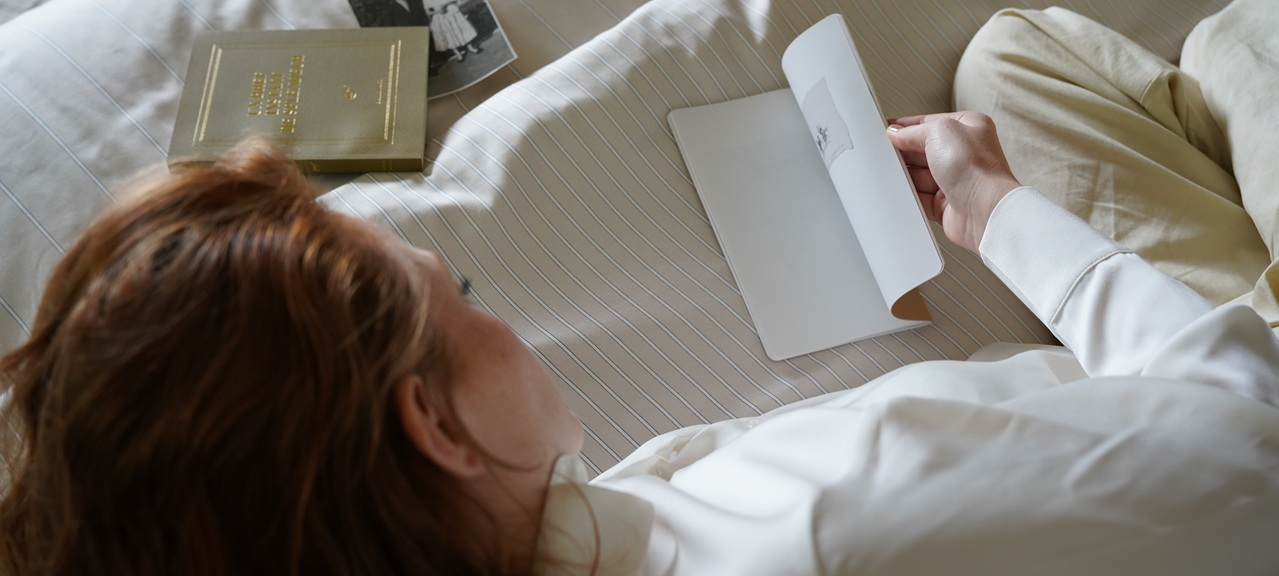Your bedroom should be the opus of peaceful pleasure, meaning that every detail in it should contribute to a nightly escape of comfort and relaxation. Among these essentials, your sheets play a pivotal role, not just in beautifying your space but in defining the quality of your sleep.
This guide is dedicated to helping you recognize the signs of wear in your sheets and understanding when it's time to refresh them. Whether you're curious about the longevity of your linens or simply seeking a rejuvenation of your sleeping environment, we encourage you to read on to learn how and when to replace your sheets so you can maintain the perfect balance of comfort and hygiene.
Signs It's Time to Replace Your Sheets
Just like your mattress, your sheet set plays an essential part of your bedding, making it important to know when it's time for a change. There are several indicators that you should consider replacing your sheets, which include factors such as the level of comfort they provide and their overall appearance. To make sure your bed remains a cozy sanctuary, find luxury bedding that meets your specific preferences.
- Fading colors: After years and as your sheets age, their colors (even if they are white) may become dull or faded due to continued exposure to sunlight and multiple washes. If attractive tones are important to you, this is a sign that it's time for a replacement.
- Pilling fabric: Over time, small pills can form on your sheets from general wear and tear or friction. Pilling not only makes your bedsheets feel uncomfortable but also detracts from their appearance.
- Rips, tears, or holes: These visible signs of damage often result from regular use or washing machine mishaps, compromising the integrity of your sheets.
- Allergies: Older sheets can harbor allergens like dust mites, triggering allergic reactions. Even with regular laundering, allergy sufferers may still need to replace their sheets more frequently to prevent such issues.
Choosing Sheet Material With Durability in Mind
The material used in your sheets greatly affects how long they will last. Some popular options include cotton, linen, bamboo, and microfiber, all of which have unique attributes that influence their durability.
- Cotton: Cotton is a popular choice for its softness, affordability, and breathability. However, its durability along with sateen sheets is determined by the weave thread count and type of cotton used – long-staple varieties tend to last longer than shorter-staple ones.
- Linen: Linen sheets are known for their fantastic moisture-wicking properties, helping to prevent overheating during sleep. They're durable and get softer over time, making them an attractive long-term option.
- Bamboo: Bamboo sheets are becoming increasingly popular due to their sustainability and natural hypoallergenic nature. They offer excellent breathability and can be highly durable too, depending on fabrication methods and thread count.
- Microfiber: Microfiber provides impressive durability at a lower price point than other materials. While not quite as breathable as natural fibers, these synthetic sheets are known for being wrinkle-resistant, pet hair-resistant, and comfortable to the touch.
When to Replace Your Duvet Cover
Duvet covers help protect your comforter from exposure to dust mites, spills, and general wear. With regular use, they may exhibit similar signs of aging as your sheets do. Additionally, duvet covers made of higher-quality materials like that from Anne de Solene's luxury options will often last significantly longer than those manufactured with cheaper fabrics.
Factors That Affect Duvet Cover Lifespan
The material and quality of your duvet cover highly influence how long it maintains its appearance and comfort. Luxurious materials such as high-thread-count cotton or linen will likely last longer than lower-quality options. Also, consider if your duvet cover (or even your duvet) has specific cleaning instructions to keep it looking fresh for longer durations.
Replacing Your Pillows and Pillowcases
Lying on a worn-out pillow can potentially lead to neck discomfort, disrupted sleep, or exacerbation of allergies. Ideally, you should replace your pillows and pillowcases every 18-24 months. Signs that your pillows may have reached the end of their life include:
- Loss of shape: If your pillow no longer maintains its original form or requires frequent adjustments during the night, it's probably time to find a new one.
- Unpleasant odors: Older pillows can absorb undesirable smells, prompting the need for a replacement.
- Visible damage: Rips, tears, or lumps in your pillow indicate they're no longer meeting their intended purpose.
- Allergy aggravation: Replace your pillows regularly if you experience increased allergy symptoms at night.
Pillowcases typically follow the same replacement timeline as sheets – look out for fading colors, pilling fabric, and visual wear and tear to decide when it's time to purchase a new set.
Choose Unrivaled Luxury with Anne de Solene
As we navigate the signs and choices that lead to rejuvenating our bedding, the importance of quality materials and thoughtful craftsmanship becomes unmistakably clear. Anne de Solene's collection of luxury bedding offers a rich palette of colors, sizes, and options that not only meet these criteria but elevate your bedroom to a haven of style and comfort. Embrace the change that comes with selecting new sheets, duvet covers, and pillowcases that are designed to last and enhance your sleeping experience. Remember, investing in your bedding is investing in countless nights of serene sleep and waking up refreshed every morning. Make your choice with confidence and let Anne de Solène transform your home into a luxurious retreat.

